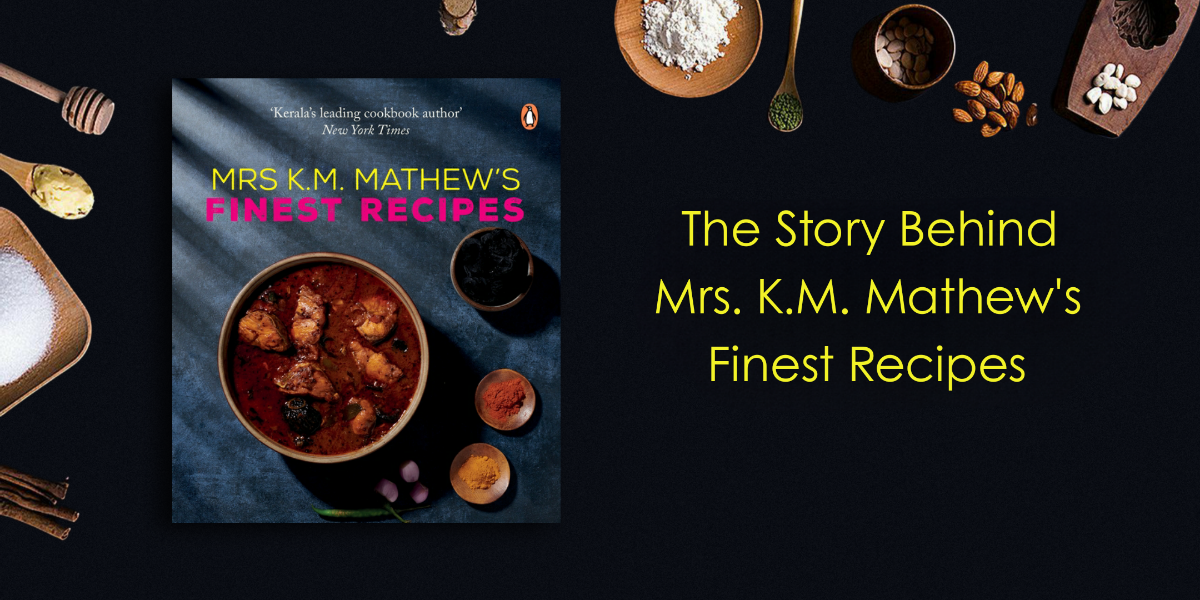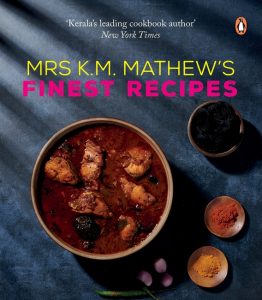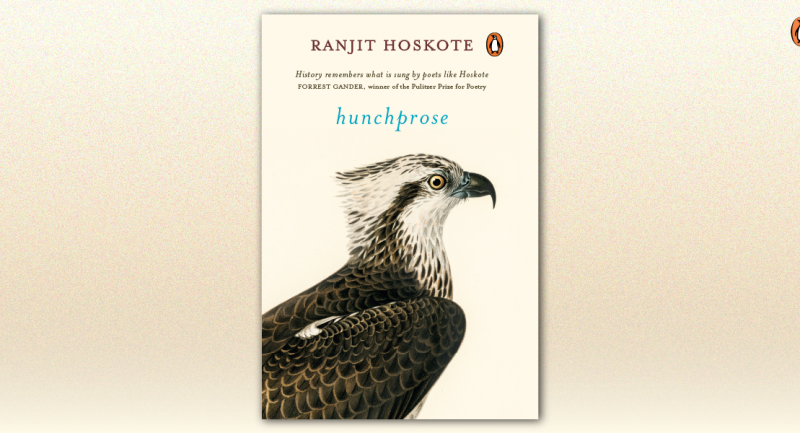
Let’s explore the flavorful world of Mrs. K.M Mathew, a culinary legend from Southern India whose passion for food, deeply rooted in her multicultural upbringing, led her to become a celebrated cookbook author and editor of the prestigious Vanitha Magazine.
Now seventeen years after her passing, her daughter, Thangam Mammem, shares the story of Mrs. K.M. Matthew’s humble beginnings and her steadfast commitment to sharing the art of cooking across the globe.
Read this exclusive excerpt to know more about the remarkable Mrs. K.M Mathew and catch a glimpse of her finest recipes.

Mrs K M Mathew’s Finest Recipes
undefined
***
My mother cradled two newborns in her arms in 1955. One was her last child (myself) and the other was her first book. It was a cookbook in Malayalam, titled Pachaka Kala (The Art of Cooking). Amma went on to write 23 more cookbooks, five of which were in English, over the next forty years. She also wrote three travelogues and a book on hair care, and edited the women’s magazine Vanitha for twenty-five years. The book in your hands, Mrs K.M. Mathew’s Finest Recipes, has been published seventeen years after she left this world. She left me more than a thousand recipes which she had collected, discovered or created. Amma had written her first cookery column on doughnuts, two years before I was born. It was published in the Malayala Manorama newspaper on 30 May 1953 along with her recipe for Goan Prawn Curry. These appeared under the name Mrs Annamma Mathew, and she became fairly well-known after a column on Mutton Bafath. Her popularity multiplied after she started using the name Mrs K.M. Mathew. This lucky name change was her own idea and she hardly ever used the name Annamma anywhere again.
It was my grandfather, K.C. Mammen Mappillai, who had spotted her talent while he was visiting my parents in Byculla, Bombay, and asked her to write a column in his newspaper. Fortunately, Amma was familiar with the varied tastes of India. Her parents were from Kerala, but she was born and brought up in faraway Kakinada, Andhra Pradesh, where her father was a doctor. He loved making chicken soup (he had made it even on the day he died, at the age of ninety-three) and her mother loved cooking Kerala’s Syrian Christian dishes. The neighbourhood was redolent with the scents of Tamil and Telugu food. Amma had always been partial to Tamil dishes, right from
childhood till long after her college days in Madurai. It was later that she developed a love for Kannadiga delicacies in Chikmagalur, where my parents lived in a coffee estate in the first few years of their marriage. Then they moved to Bombay, and this was where she learnt to cook a variety of local, north Indian and continental dishes.
Amma had another advantage—she spoke fluent English, a gift not so common among Indian women in those days. This helped her enter the kitchens of even the most elite hotels, where she would never shy away from asking for recipes or other cooking advice from the chefs. Amma did it with natural grace, whether she was in India or travelling to other countries, in her forties. She was inspired to share the art of cooking for the sheer enjoyment of delicious food. She did not even recommend any complex or elaborate recipes to her readers because, for her, simplicity and taste came before novelty. She even avoided using words like ‘foodie’ and ‘cuisine’. ‘Simple good
food’ was her motto.
She wrote her recipes early in the morning, after waking up at 3 a.m. No recipe made it to her column before she had tested it at least three times. My father always got the first chance to taste it and to give feedback. Amma made sure she bought all the ingredients herself and measured them precisely. In the early years, she would use cigarette tins as measuring cups and gradually she accumulated all the paraphernalia, including a mallet from abroad for tenderising the meat. When fair reviews of her books appeared in the press, she was ecstatic.
Food was sacred for Amma. She never wasted it. If there was anything left over, she would make a delicious new dish out of it. She always taught us to respect food and forbade shoptalk at the dinner table at our home in Roopkala, Kottayam, Kerala. All she wanted was for everyone to enjoy good food. Far from secretive, she took joy in sharing her recipes with everyone. In fact, sometimes she would send the recipe along with the food she would send for her friends and acquaintances and if they ever faced a problem cooking it, she would even send her trained cook to demonstrate the cooking procedure.
Whoever visited Amma, she always gave out a packet of crisp savouries for them to take home. Her wedding gift to her acquaintances was invariably a bundle of her cookbooks. Even today, many people in India and abroad tell me that Amma’s book Nadan Pachakarama was like the Bible to them when they had just started their married life and were learning to cook.
Even when she was in a wheelchair, in her twilight years, she remained engaged and active. When not cooking, she was often found reading books, appreciating art, singing songs, playing the violin, teaching music, raising funds for charity, guiding women’s organizations, or supervising work at Vanitha. As a mother, she practised tough love, with a heart that remained tender inside. This book carries the essence of her soul.
-Thangam Mammen
***
Get your copy of Mrs. K.M. Mathew’s Finest Recipes wherever books are sold.









